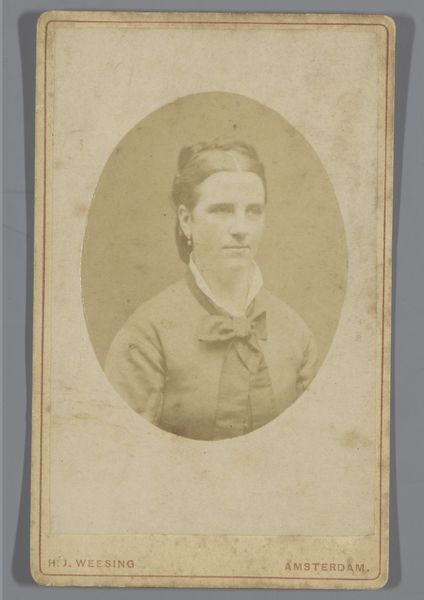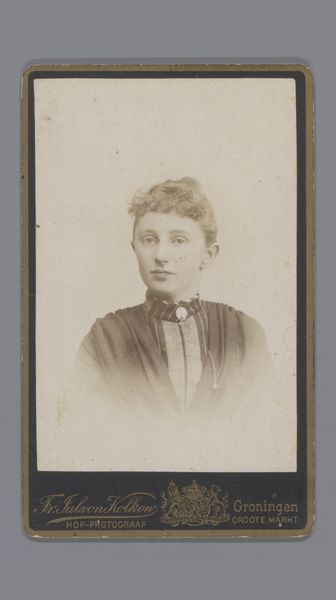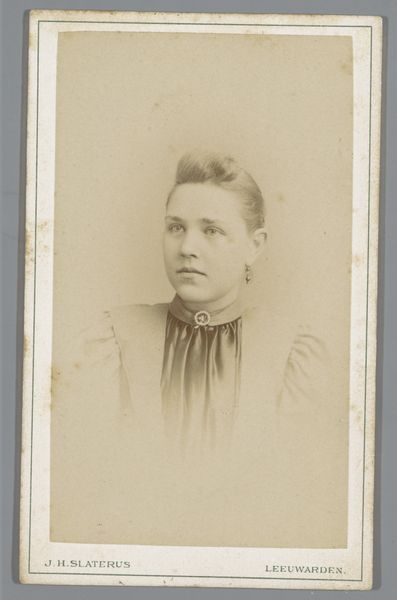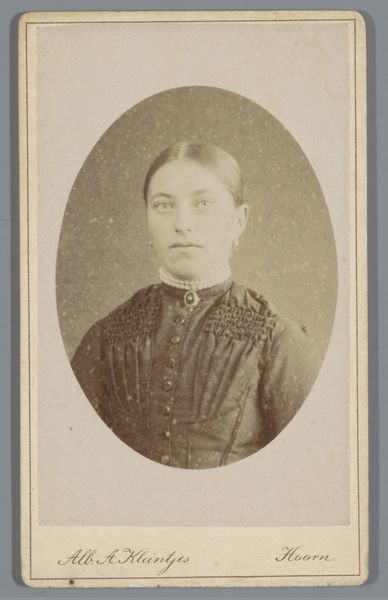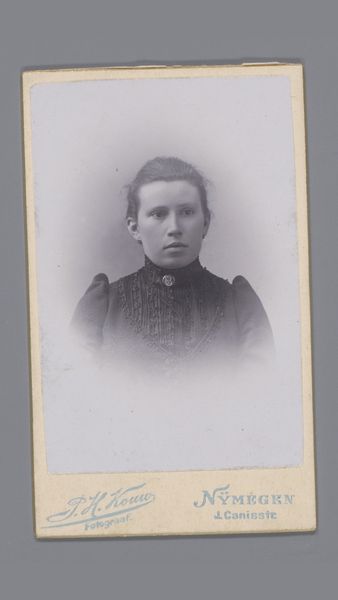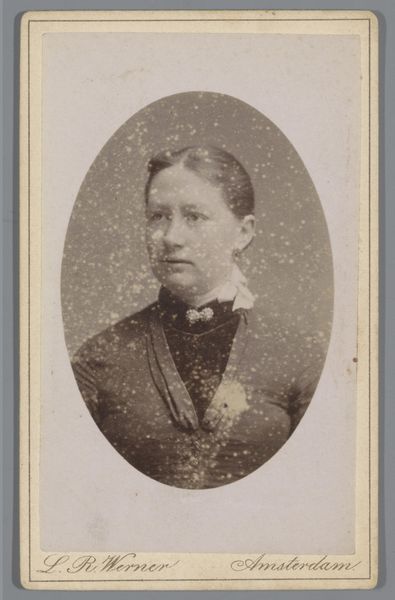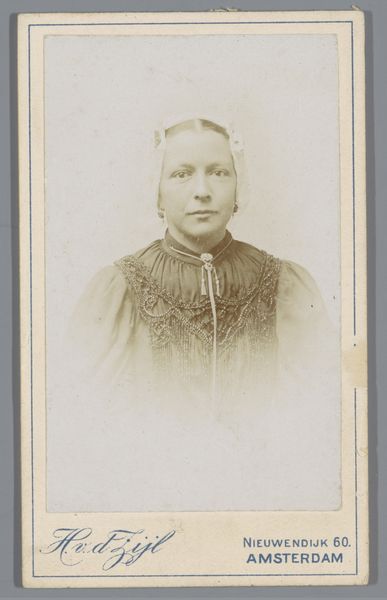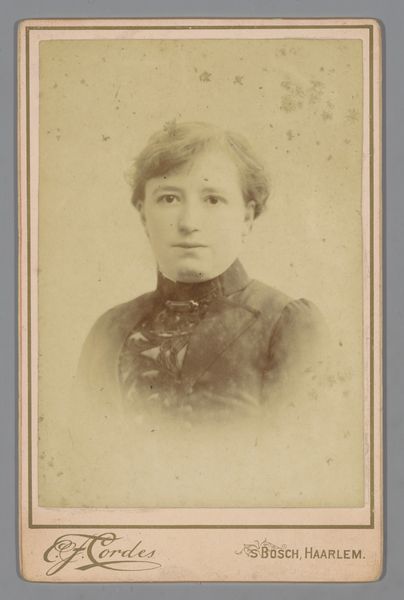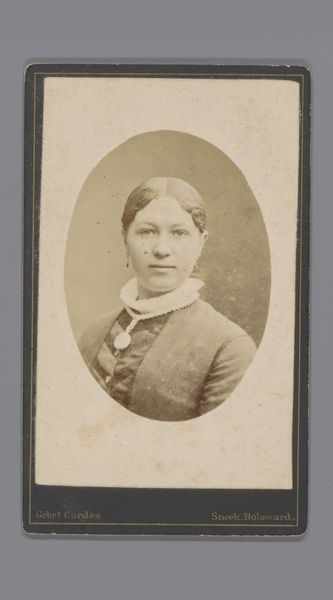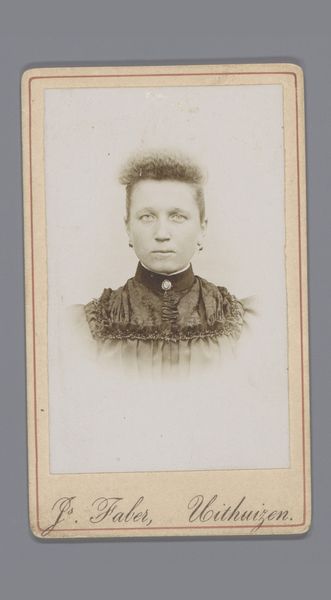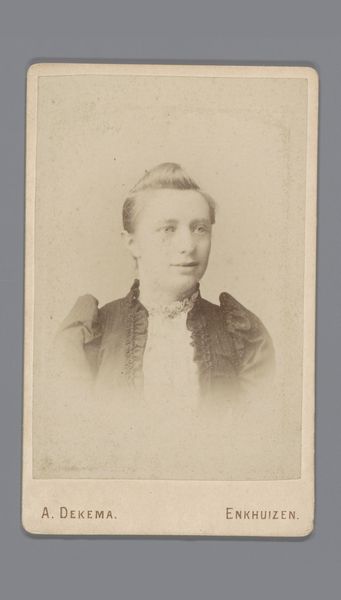
paper, photography, gelatin-silver-print
#
portrait
#
aged paper
#
still-life-photography
#
light coloured
#
paper
#
photography
#
gelatin-silver-print
#
paper medium
Dimensions: height 103 mm, width 64 mm
Copyright: Rijks Museum: Open Domain
Curator: Here we have Willem Carel Heijenberg's gelatin-silver print from between 1882 and 1895. The title tells us all we know of the sitter: "Portrait of an Unknown Woman". Editor: The first thing that strikes me is how composed she appears. Almost stoic. The sepia tones give it a feel of faded grandeur. I wonder what her story is. Curator: Well, this type of portrait was quite common. These were often commissioned for personal or family keepsakes, so perhaps we can view this as a look into middle-class Dutch society at the end of the 19th century. Editor: I agree. You can tell a lot about social standing through fashion, and here she’s dressed modestly, though respectably. I'd say she’s someone navigating social expectations, adhering to standards of femininity of the time while maintaining a sense of herself. Her gaze, for example, feels direct and self-assured. Curator: And we should note the context of photography itself. It became more accessible in the latter part of the 19th Century. That changes the game for portraiture. You didn’t need to be wealthy to be captured for posterity. Editor: Which, of course, is important to bear in mind! This photograph becomes an interesting document of social mobility. Even though we don't know her name or social standing, we are confronted with an assertion of visibility and perhaps even resistance within the constraints of the time. Curator: The rigid formality might strike viewers today as somewhat stifling, but I find that compelling, how different societies shape personal expression. Editor: Absolutely. And in many ways it makes the subtle nuances of expression even more poignant. Curator: Thinking about the photograph itself as an object—the aged paper and silver gelatin process—adds to that sense of tangible history, don’t you think? It gives her story an almost ghostly presence. Editor: Indeed. Each viewing invites reflection upon societal structures of gender and class at that time. Curator: This has made me think about what histories go unrecorded and what nuances are often missed in traditional art history. Editor: I agree completely. It reminds us of the importance of considering identity when engaging with art from any period.
Comments
No comments
Be the first to comment and join the conversation on the ultimate creative platform.

